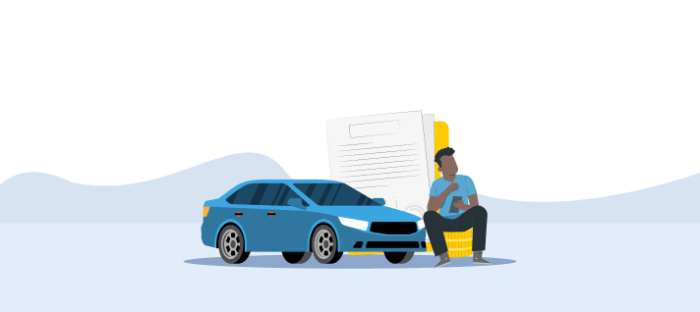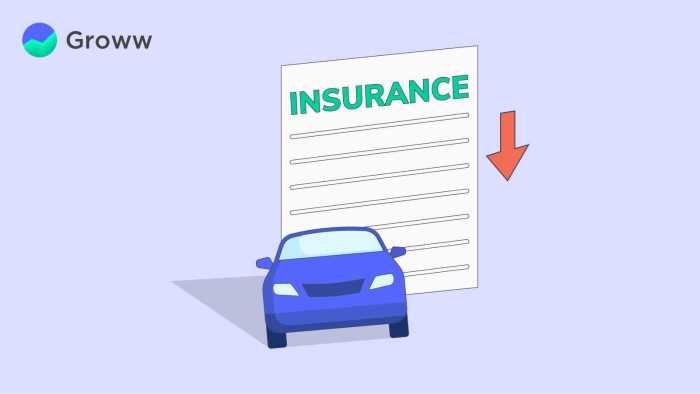Navigating the complexities of car insurance can feel like driving through a maze. Premiums seem arbitrary, and finding ways to lower them often feels elusive. This guide demystifies the process, providing actionable strategies to significantly reduce your car insurance costs. We’ll explore factors influencing premiums, effective ways to improve your driving record, smart coverage choices, and valuable discounts you might be missing. By the end, you’ll be equipped to confidently negotiate lower rates and secure the best possible car insurance policy.
Understanding your car insurance premium isn’t just about saving money; it’s about making informed decisions about your financial protection. This guide breaks down the often-confusing world of insurance, empowering you to take control of your premiums and secure the best possible coverage at the most affordable price. We’ll delve into practical tips and strategies, equipping you with the knowledge to effectively lower your costs while maintaining adequate protection.
Understanding Your Car Insurance Premium
Understanding your car insurance premium is crucial for managing your finances effectively. Premiums are determined by a complex interplay of factors, and knowing how these factors influence your cost can help you find ways to potentially lower your payments. This section will break down the key elements influencing your premium, how insurers calculate them, and how different driver profiles impact the final cost.
Factors Influencing Car Insurance Costs
Several factors contribute to the final cost of your car insurance premium. These factors are considered by insurance companies to assess the risk associated with insuring you and your vehicle. The more risk you present, the higher your premium will likely be. These factors include your driving history, the type of car you drive, your location, and your age.
How Insurance Companies Calculate Premiums
Insurance companies use sophisticated actuarial models to calculate premiums. These models consider the statistical probability of you making a claim based on the risk factors associated with your profile. They analyze vast amounts of data, including accident rates, claims history, and demographic information, to create a risk score. This score is then used to determine your premium. Different companies may weight these factors differently, leading to variations in pricing. For example, one company might place more emphasis on driving history, while another might prioritize the type of vehicle you own.
Driver Profile Impact on Premiums
Different driver profiles significantly impact premiums. For example, a young, inexperienced driver with a history of speeding tickets will typically pay a much higher premium than an older, experienced driver with a clean driving record. Similarly, drivers with high-performance vehicles or those living in high-crime areas might face higher premiums due to the increased risk of accidents or theft. A driver with multiple at-fault accidents will see a dramatic increase in their premium compared to a driver with no accidents.
Comparison of Premium Factors Across Major Insurance Providers
The following table provides a simplified comparison of how major insurance providers (represented generically as Provider A, B, C, and D) might weigh various factors when calculating premiums. Note that these are illustrative examples and actual values will vary based on specific circumstances and individual insurer policies.
| Factor | Impact on Premium (High/Medium/Low) | Example | Explanation |
|---|---|---|---|
| Driving History (Accidents/Tickets) | High | Three accidents in the past three years | Multiple accidents significantly increase risk and thus the premium. |
| Age and Experience | Medium | 20-year-old driver vs. 40-year-old driver | Younger, less experienced drivers statistically have higher accident rates. |
| Vehicle Type and Value | Medium | Sports car vs. Sedan | Higher-value vehicles are more expensive to repair and often attract higher premiums. |
| Location (Crime Rate/Accident Density) | Medium | Urban area vs. Rural area | Areas with high crime rates or frequent accidents present a higher risk. |
| Credit Score (in some states) | Low | Credit score below 600 | In some states, credit score is a factor; a lower score might slightly increase premiums. |
| Coverage Level | High | Full coverage vs. Liability only | Higher coverage levels naturally result in higher premiums. |
Improving Your Driving Record

Your driving history significantly impacts your car insurance premium. Insurance companies assess risk based on your past driving behavior, and a clean record translates to lower premiums. Conversely, accidents and violations increase your perceived risk, leading to higher costs. Understanding this connection empowers you to take proactive steps to manage your insurance expenses.
Accidents and Traffic Violations: Their Impact on Premiums
Insurance companies meticulously track accidents and traffic violations. Each incident increases your risk profile, resulting in higher premiums. The severity of the accident or violation directly correlates with the premium increase. For example, a minor fender bender might result in a modest increase, while a serious accident involving injuries or significant property damage could lead to a substantial premium hike. Similarly, multiple speeding tickets or more serious offenses like reckless driving or DUI convictions will dramatically raise your rates. The impact isn’t just immediate; it can persist for several years, affecting your premiums even after the incident is long past.
Strategies for Safer Driving Habits
Adopting safer driving habits is crucial for reducing your risk and, consequently, your insurance premiums. This involves a multi-faceted approach. Prioritize defensive driving techniques, always maintaining a safe following distance, and avoiding distractions like cell phones. Regular vehicle maintenance, ensuring your brakes, tires, and lights are in optimal condition, also contributes to safer driving and can indirectly reduce the likelihood of accidents. Being aware of your surroundings, anticipating potential hazards, and driving at appropriate speeds for the conditions are also essential components of a safer driving approach. For instance, adjusting your speed for adverse weather conditions like rain or snow significantly minimizes accident risks.
Defensive Driving Courses and Their Impact on Insurance Costs
Many insurance companies offer discounts to drivers who complete a state-approved defensive driving course. These courses typically cover risk management techniques, accident avoidance strategies, and safe driving practices. Successfully completing the course demonstrates your commitment to safe driving and can significantly reduce your premium. The specific discount varies depending on the insurer and your location, but it can often be substantial, potentially saving hundreds of dollars annually. The positive impact on your insurance record can outweigh the cost of the course itself.
Obtaining and Submitting a Defensive Driving Certificate
1. Locate an Approved Course: Contact your state’s Department of Motor Vehicles (DMV) or your insurance provider to identify approved defensive driving courses in your area. Many courses are offered online, providing flexibility and convenience.
2. Complete the Course: Enroll in the chosen course and diligently complete all required modules and assessments. The course duration and content vary, but most require several hours of study.
3. Obtain Your Certificate of Completion: Upon successful completion, you will receive a certificate of completion. This certificate serves as proof of your participation and successful completion of the course. Ensure you retain a copy for your records.
4. Submit Proof to Your Insurer: Contact your insurance company and inquire about their specific process for submitting proof of completion. Most insurers require you to provide a copy of your certificate. This might involve uploading it to their online portal, mailing a physical copy, or faxing it to them. Keep a copy of the submission confirmation for your records.
Shopping Around for Insurance
Finding the best car insurance rate often involves more than just choosing the first company you see. A proactive approach to comparing quotes from different insurers is crucial to securing the most competitive premium. This involves understanding how to effectively utilize online comparison tools and carefully reviewing policy details.
Effectively comparing quotes requires a structured approach. Don’t just focus on the initial price; consider the coverage offered, deductibles, and any additional features. Remember that the cheapest option isn’t always the best if it leaves you underinsured.
Utilizing Online Comparison Tools
Online comparison websites aggregate quotes from multiple insurance providers, simplifying the process of finding the best rates. These tools typically require you to input basic information about yourself, your vehicle, and your driving history. The websites then generate a list of potential insurance providers and their corresponding quotes. Remember to be wary of misleading advertising and always verify the information provided on these sites with the insurers directly. For example, a website might highlight a “low” premium but exclude important details about coverage limits or deductibles. Always cross-reference information.
Reading the Fine Print in Insurance Policies
Each insurance policy is a legally binding contract. Before committing to a policy, carefully review the fine print to understand exactly what is covered and what is excluded. Pay close attention to the definitions of terms like “comprehensive coverage,” “collision coverage,” and “liability limits.” Look for clauses related to exclusions, deductibles, and premium adjustments. For instance, one policy might offer a lower premium but have a higher deductible, meaning you’ll pay more out-of-pocket in the event of an accident. Compare the total cost, considering both the premium and the potential deductible.
Contacting Multiple Insurers and Requesting Quotes
Contacting multiple insurers directly allows you to obtain personalized quotes and ask clarifying questions. Prepare a concise summary of your driving history, vehicle information, and desired coverage. When contacting insurers, whether by phone, email, or online form, be clear and polite. Ask specific questions about coverage options, discounts, and payment plans. For example, you might ask about discounts for bundling policies (home and auto), safe driving records, or anti-theft devices. Document all communication with insurers, including quotes and policy details, for easy comparison. Keep a spreadsheet to track your progress, including the insurer’s name, the quoted premium, and a summary of the coverage offered.
Maintaining Your Vehicle

Proper vehicle maintenance and the inclusion of safety features can significantly impact your car insurance premium. Insurers assess risk, and a well-maintained car with robust safety features is considered a lower risk than a poorly maintained one. This translates directly into lower premiums for you. Conversely, neglecting maintenance can lead to higher premiums due to the increased likelihood of accidents and claims.
Insurers recognize that preventative maintenance reduces the chances of accidents caused by mechanical failure. A vehicle in good working order is less likely to experience brake failure, tire blowouts, or other mechanical issues that could lead to an accident. Furthermore, safety features like anti-lock brakes (ABS), electronic stability control (ESC), and airbags demonstrably reduce the severity of accidents and the associated repair costs. These factors combine to influence the insurer’s assessment of risk and ultimately your premium.
The Impact of Anti-theft Devices and Security Systems
Anti-theft devices and comprehensive security systems are viewed favorably by insurance companies. These systems act as deterrents to theft and vandalism, reducing the insurer’s potential liability. Installing a visible alarm system, an immobilizer that prevents the engine from starting without the correct key, or a GPS tracking device can all lead to a reduction in your premium. The specific discount offered will vary depending on the insurer and the type of system installed; some insurers offer substantial discounts for factory-installed security systems, while others may offer smaller discounts for aftermarket additions. For example, a comprehensive system incorporating GPS tracking, an alarm, and an immobilizer might yield a discount of 10-15% on your premium compared to a vehicle with no such system.
Vehicle Modifications and Their Impact on Premiums
Certain vehicle modifications can affect your insurance premium, either positively or negatively. Performance modifications, such as engine upgrades or turbochargers, often lead to higher premiums. This is because these modifications can increase the vehicle’s speed and power, potentially increasing the risk of accidents. Conversely, safety modifications, such as installing upgraded headlights or a backup camera, may lead to a small reduction in your premium. Similarly, modifications that improve fuel efficiency, while not directly impacting safety, might also result in a slight premium decrease as it suggests a more responsible driving style. For instance, installing a performance exhaust system could increase your premium due to the increased risk of noise pollution and potential for speeding tickets, while adding a dashcam might slightly decrease your premium as it provides evidence in case of accidents.
Vehicle Maintenance Tasks Leading to Lower Premiums
Regular vehicle maintenance is key to lowering your insurance premiums. By proactively addressing potential issues, you minimize the risk of accidents and mechanical failures.
- Regular oil changes: Maintaining proper oil levels and changing the oil regularly prevents engine damage and extends the life of your vehicle.
- Tire rotation and balancing: Ensuring proper tire pressure and alignment improves handling and reduces the risk of blowouts.
- Brake system inspections: Regular inspections ensure your brakes are functioning correctly, preventing accidents caused by brake failure.
- Regular servicing: Following the manufacturer’s recommended service schedule helps identify and address potential problems before they become major issues.
- Maintaining accurate vehicle records: Keeping detailed records of all maintenance and repairs performed can demonstrate to your insurer your commitment to vehicle upkeep.
Understanding Your Policy and Renewals

Regularly reviewing your car insurance policy is crucial for identifying potential savings and ensuring you have the right coverage. Understanding your policy details and the renewal process empowers you to make informed decisions and potentially lower your premiums. This involves careful examination of your policy documents and proactive communication with your insurer.
Policy Review for Savings
Thoroughly reviewing your policy allows you to identify areas where you might be overpaying. Check your coverage limits, deductibles, and optional add-ons. For instance, if you’ve recently paid off your car loan, you might be able to reduce your coverage since comprehensive coverage is often tied to loan repayment. Similarly, if your driving habits have changed, such as significantly reduced mileage, you may qualify for a lower premium based on usage-based insurance programs. Comparing your current coverage to your needs will help pinpoint unnecessary expenses. Consider if you truly need roadside assistance or rental car reimbursement, for example. Eliminating unnecessary add-ons can significantly impact your premium.
Contacting Your Insurer for Adjustments
Contacting your insurer to request changes is straightforward. Most companies offer multiple contact methods, including phone, email, and online portals. Clearly state the changes you want to make, providing any supporting documentation if necessary (e.g., proof of a paid-off loan). For example, to request a lower mileage limit, you would provide documentation showing your reduced driving distance. Be polite and professional in your communication. Keep records of all communication, including dates, times, and the names of the representatives you speak with. This documentation will be helpful if any disputes arise later.
Negotiating Lower Premiums During Renewals
Renewal time presents an excellent opportunity to negotiate a lower premium. Before your renewal date, contact your insurer and explain any changes in your circumstances that could impact your risk profile – a new, safer car, improved driving record, or completion of a defensive driving course. Armed with this information, you can confidently negotiate a more favorable rate. Don’t hesitate to compare quotes from other insurers. This competition often motivates your current insurer to offer a more competitive renewal rate to retain your business. For instance, if a competitor offers a significantly lower rate, you can use this as leverage to negotiate with your existing provider.
Understanding Your Policy Documents
Insurance policies can seem complex, but understanding the key sections is essential. Familiarize yourself with the declarations page, which Artikels your coverage details, including policy limits, deductibles, and premiums. Carefully review the coverage sections to understand what is and isn’t covered. Pay close attention to exclusions, which detail situations where coverage does not apply. Finally, understand the claims process Artikeld in the policy. Many insurers provide online access to policy documents, making review convenient. If you have difficulty understanding any aspect of your policy, don’t hesitate to contact your insurer for clarification. They are obligated to explain the terms and conditions in a clear and understandable manner.
End of Discussion
Lowering your car insurance premium requires a proactive approach, encompassing careful driving habits, strategic coverage choices, and diligent comparison shopping. By implementing the strategies Artikeld in this guide – from improving your driving record to leveraging available discounts and shopping around for the best rates – you can significantly reduce your insurance costs without compromising on essential coverage. Remember, a little effort can lead to substantial savings over time. Take control of your insurance costs today and enjoy the financial benefits of a well-managed policy.
Question & Answer Hub
What is the impact of my credit score on my car insurance premium?
In many states, your credit score is a factor in determining your insurance premium. A higher credit score generally translates to lower premiums, while a lower score can lead to higher premiums. This is because insurers view a good credit score as an indicator of responsible financial behavior.
Can I get my insurance premium lowered if I install a telematics device?
Yes, many insurers offer discounts for installing telematics devices, which track your driving habits. If you demonstrate safe driving behavior, you may qualify for a reduction in your premium. The specific discount and eligibility criteria vary by insurer.
How often should I review my car insurance policy?
It’s recommended to review your car insurance policy at least annually, or before your renewal date. This allows you to ensure your coverage still meets your needs and to identify any potential areas for savings.
What happens if I switch insurance companies mid-term?
Switching insurance companies mid-term is usually possible, but you might incur a penalty depending on your policy and the insurer. It’s essential to contact your current insurer to understand any cancellation fees or prorated refunds before switching.